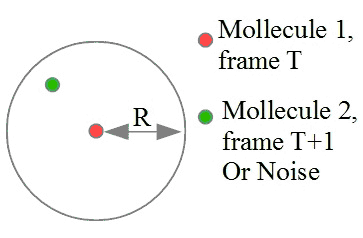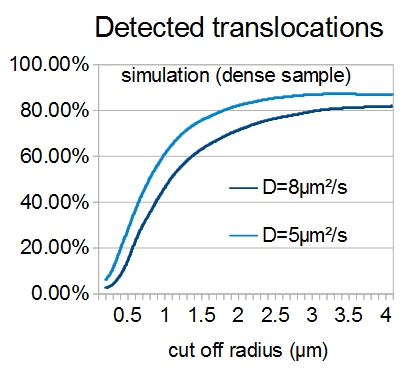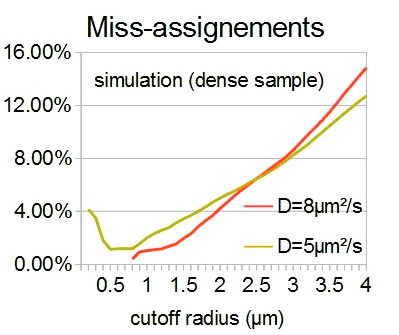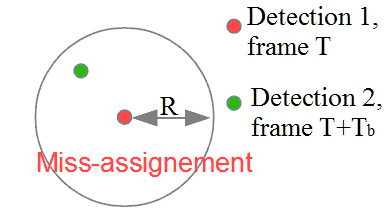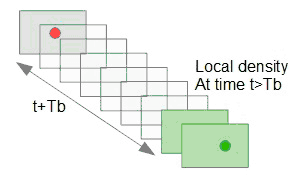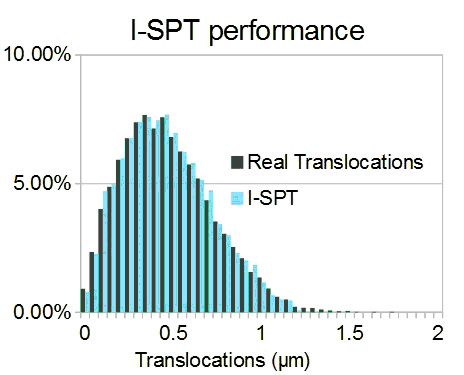Miss-assignments occur when:
Two detections that does not belong to the same molecule are linked together.
Miss-detection is inaccurately incorporated inside a trace.
I-SPT estimate miss-assignment and use this estimation to rescale diffusion statistics.
With an increasing cut-off tracking radius R, the number of possible connections (or step translocations) increases. This is in favor of a large cut-off radius for accurate statistics:
Unfortunately the proportion of miss-assignments which quantifies the validity of the statistics also increases with the cut-off radius:
Since miss detections depends on the molecule speed it cannot be a-piori computed. However it has a strong effect on diffusion statistics such as the step translocation histogram which quantifies the number of displacements as a function of their size.
I-SPT advantageously uses the photo-physics of the fluorophore to estimate miss-assignments under the following assumptions:
Molecules are permanently bleached after a given bleaching time Tb.
The density of detections does not vary rapidly along the experiment.
Under those assumptions, connections performed with inter frame larger than Tb is a miss-assignment:
I-SPT therefore estimates tracking miss-assignment by computing the local density around a each detection a time labs larger than Tb:
The I-SPT translocation histograms are the detected translocations, corrected by the tracking error.
